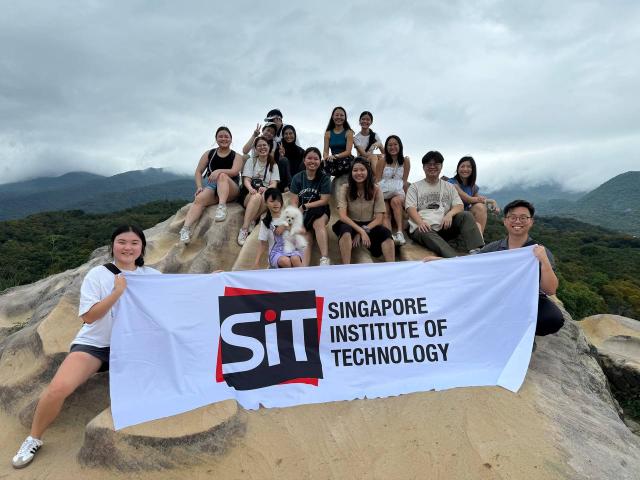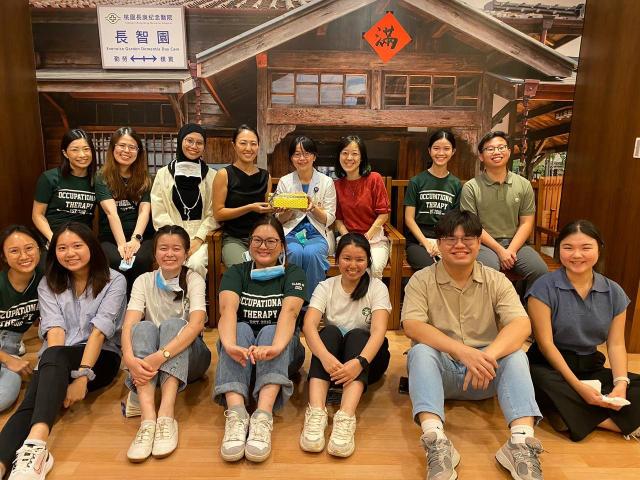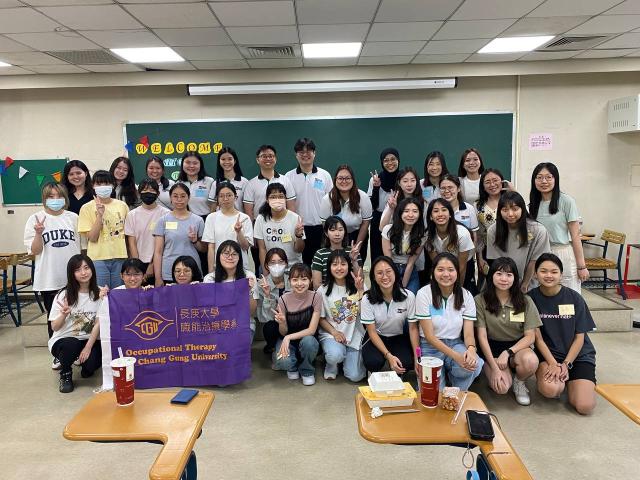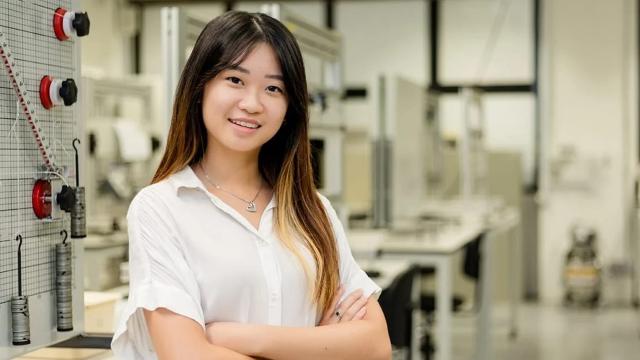Two Occupational Therapy students packed their bags for Taiwan on a quest to broaden their knowledge and experience through SIT’s Overseas Exposure Programme.

Jeremy Cheah (first row on the right) and Joquin Chia (fourth row, first from the left), at the top of Jinjuanyan hiking trail in Taiwan as part of SIT’s Overseas Exposure Programme. (Photo: Jeremy and Joquin)
When presented with the option to either climb a well-paved staircase or scale the rocky path of Taiwan’s Junjianyan mountain range, the choice was a no-brainer. Equipped with nothing but sheer determination and a bunch of ropes, Jeremy Cheah and Joquin Chia, together with their friends from the Singapore Institute of Technology (SIT), unanimously chose the latter.
Taking the path less trodden proved to be a thoroughly rewarding decision as they were met with a breathtaking view of the city at the mountain’s peak – an experience that very much mirrored their Overseas Exposure Programme (OEP) journey.
In the summer of 2024, Occupational Therapy students Jeremy and Joquin embarked on a week-long exchange programme at Chang Gung University (CGU) in Taiwan. They were spurred by a common desire to learn about the different occupational therapy practices overseas and were drawn to Taiwanese cuisine and culture.
“I was keen to learn more about the university’s myriad research publications across different clinical settings,” Joquin said. As future occupational therapists, they will have to assist people of all ages with a range of disabilities – cognitive, mental and physical – to help them regain independence in their daily lives.
But the duo soon discovered that Taiwan would offer them more than they had expected.
In Good Hands
Despite the programme only being a week long, the students were given numerous opportunities to visit healthcare facilities where occupational therapists work. These included paediatric and psychiatric facilities, community nursing homes, and the dementia centre at Taoyuan Chang Gung Memorial Hospital.
Their experience was made even more enriching by the local clinicians who freed up time to introduce the students to their work and enabled them to interact with patients living in the inpatient psychiatric facility.
This was a novel experience for Jeremy, who shared, “As a Year 2 student who had yet to have any clinical experience, setting foot into healthcare facilities and interacting with patients was eye-opening for me.”
Beyond on-site visits, Jeremy and Joquin had the chance to interact with the local students about the Taiwanese healthcare system.
For instance, they observed that Taiwan seems very intentional in creating healthcare facilities for the elderly and supporting dementia patients, with dementia facilities incorporating elements of traditional Taiwan, like familiar furniture and games, to create a more comfortable environment for patients.
“Seeing how Taiwan is so elderly-friendly in terms of their culture and infrastructure that integrates the elderly into society, I think Singapore has a long way to go in facilitating ‘ageing successfully’,” he added.

Jeremy (front row, first from right) and Joquin (back row, third from left), together with other SIT students visiting the Everwise Garden Dementia Day Care at the Chang Gung Memorial Hospital in Taoyuan. (Photo: Jeremy and Joquin)
Healthcare with a Heart
Most importantly, their experience at CGU honed their interpersonal skills and sense of empathy towards patients, which are key to helping them be better future healthcare professionals.
For Jeremy, his communications skills in Mandarin improved significantly. While initially confident about his ability to converse in the language, he struggled to make sense of the unfamiliar colloquialisms and terminology that the locals used in Taiwan. Undeterred, he found a way to communicate more effectively with patients by clarifying what they meant in simpler terms.
This skill would come in useful during his clinical placement at Tan Tock Seng Hospital, which began the day after his OEP stint.
“Many of the patients in the geriatrics ward speak Mandarin; thus, my OEP stint polished my conversational skills,” he shared.
Joquin, who had completed her clinical placement at St Luke’s Eldercare before the OEP, had her share of takeaways – the importance of collaboration and knowledge sharing between healthcare professionals from different fields.
She recalled how occupational therapists worked with physicians at the acute care department at Linkou Chang Gung Memorial Hospital to devise a novel shoulder abduction splint. This offered greater comfort than conventional methods of tying a bucket to the patient’s waist to keep their arm in a certain position.
“This made me realise how in healthcare, we are never working alone, and collaboration can spark new ideas and methods that ultimately benefit the clients,” she said. “It allowed me to better understand the importance of close collaboration, which I will bring forth in my practice as a healthcare professional in the future.”

SIT OT students gain global insights through their OEP trip to Taiwan. (Photo: Jeremy and Jocquin)
![[FA] SIT One SITizen Alumni Initiative_Web banner_1244px x 688px.jpg](/sites/default/files/2024-12/%5BFA%5D%20%20SIT%20One%20SITizen%20Alumni%20Initiative_Web%20banner_1244px%20x%20688px.jpg)

